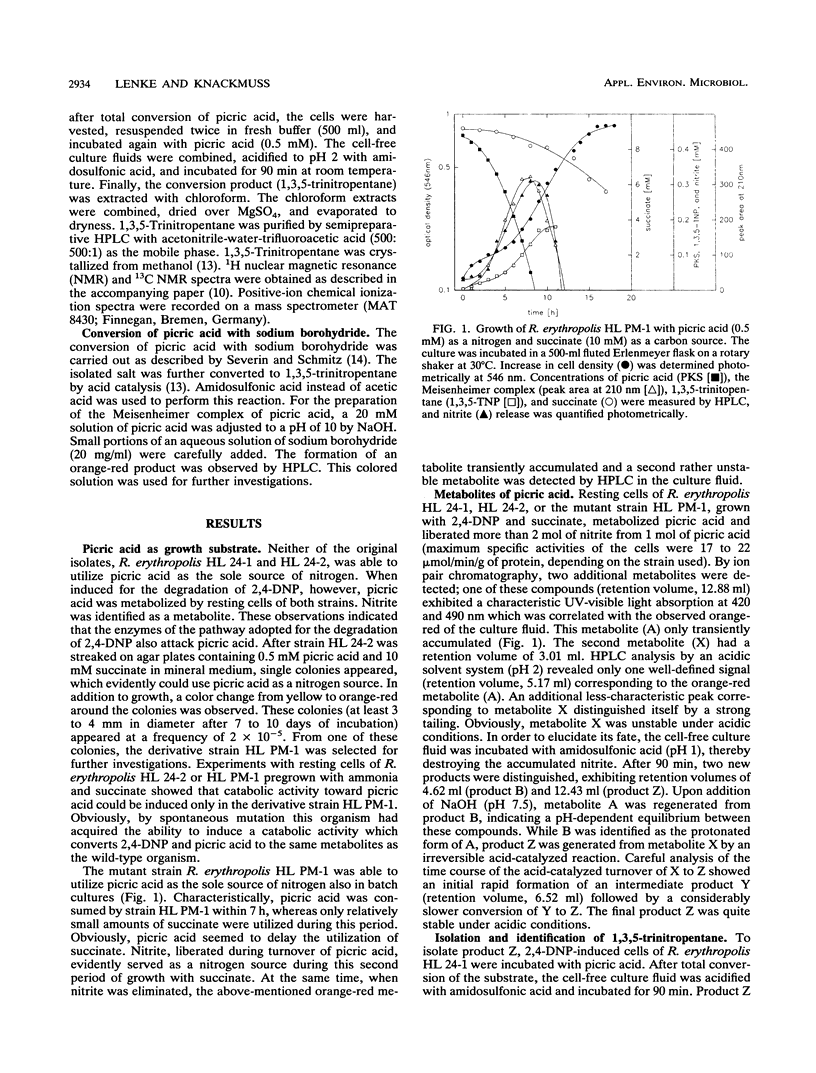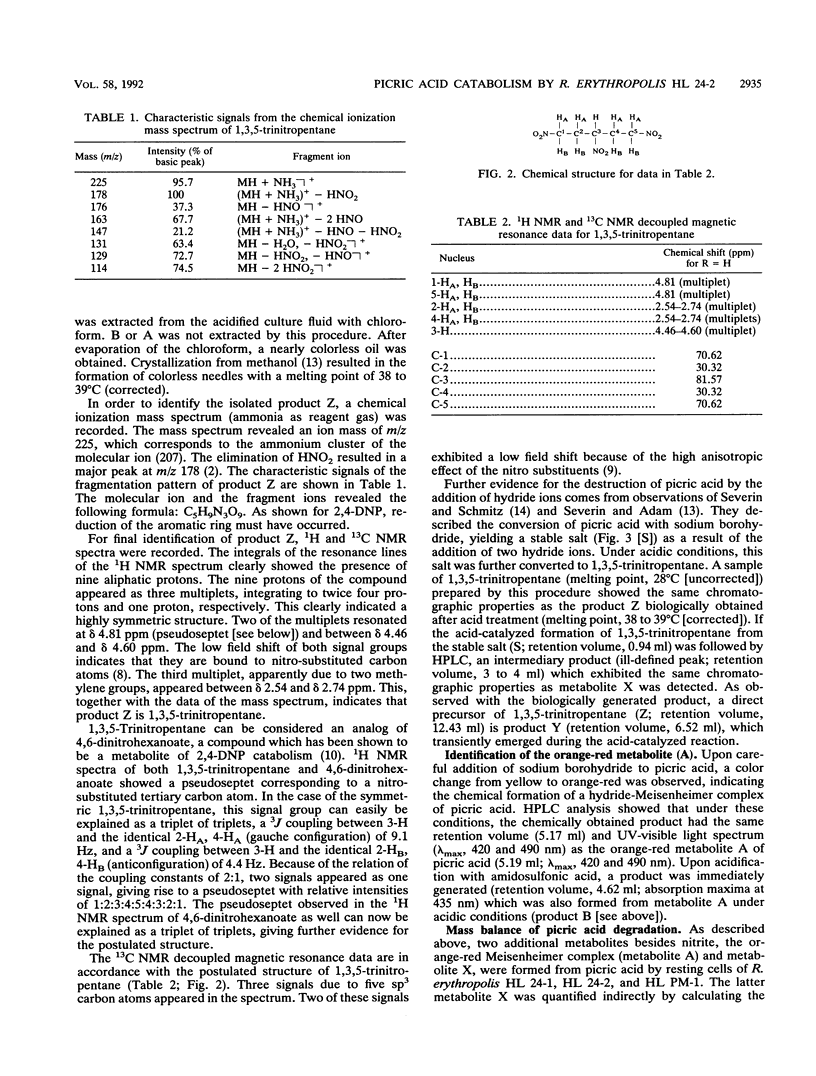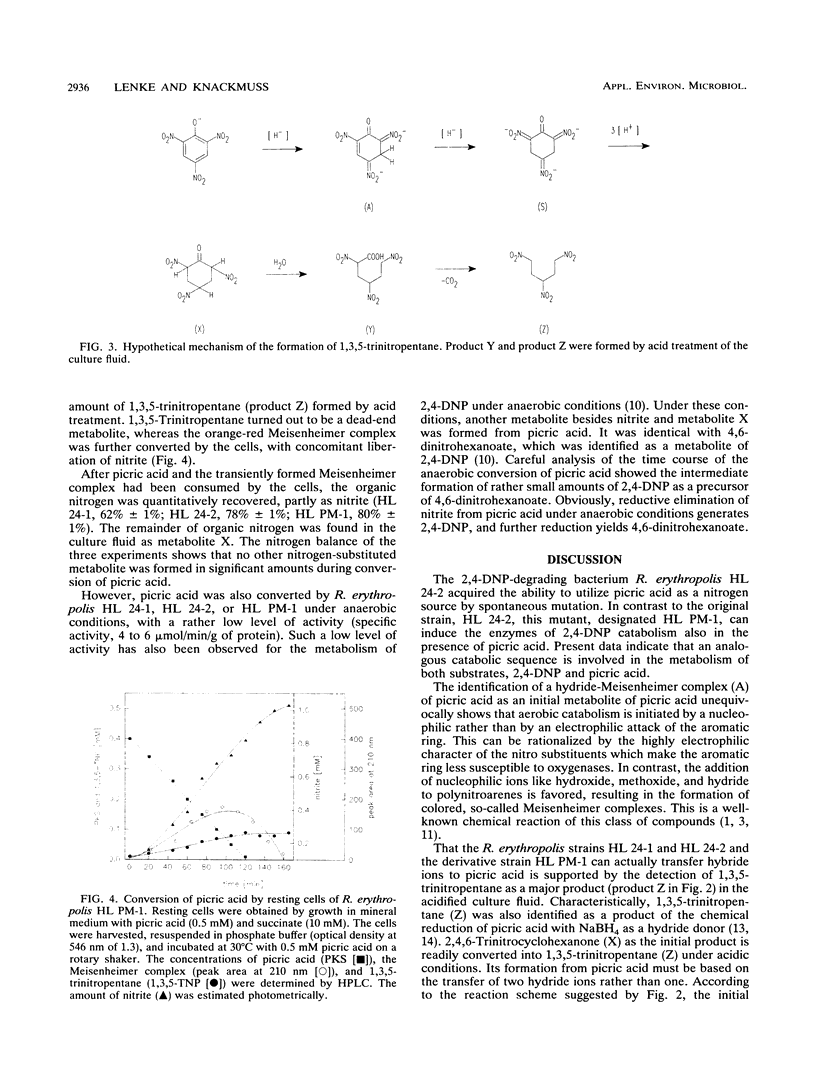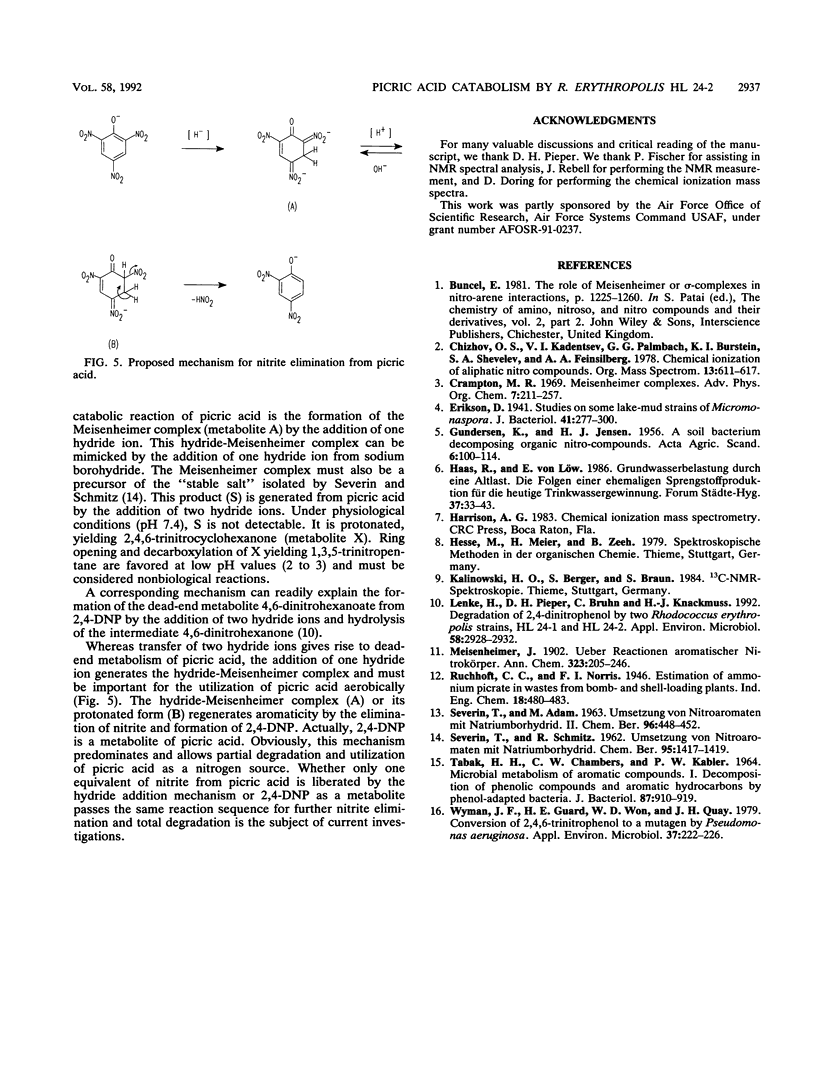Abstract
Rhodococcus erythropolis HL 24-2, which was originally isolated as a 2,4-dinitrophenol-degrading bacterium, could also utilize picric acid as a nitrogen source after spontaneous mutation. During growth, the mutant HL PM-1 transiently accumulated an orange-red metabolite, which was identified as a hydride-Meisenheimer complex of picric acid. This complex was formed as the initial metabolite and further converted with concomitant liberation of nitrite. 2,4,6-Trinitrocyclohexanone was identified as a dead-end metabolite of the degradation of picric acid, indicating the addition of two hydride ions to picric acid.
Full text
PDF




Selected References
These references are in PubMed. This may not be the complete list of references from this article.
- Erikson D. Studies on Some Lake-Mud Strains of Micromonospora. J Bacteriol. 1941 Mar;41(3):277–300. doi: 10.1128/jb.41.3.277-300.1941. [DOI] [PMC free article] [PubMed] [Google Scholar]
- Lenke H., Pieper D. H., Bruhn C., Knackmuss H. J. Degradation of 2,4-dinitrophenol by two Rhodococcus erythropolis strains, HL 24-1 and HL 24-2. Appl Environ Microbiol. 1992 Sep;58(9):2928–2932. doi: 10.1128/aem.58.9.2928-2932.1992. [DOI] [PMC free article] [PubMed] [Google Scholar]
- TABAK H. H., CHAMBERS C. W., KABLER P. W. MICROBIAL METABOLISM OF AROMATIC COMPOUNDS. I. DECOMPOSITION OF PHENOLIC COMPOUNDS AND AROMATIC HYDROCARBONS BY PHENOL-ADAPTED BACTERIA. J Bacteriol. 1964 Apr;87:910–919. doi: 10.1128/jb.87.4.910-919.1964. [DOI] [PMC free article] [PubMed] [Google Scholar]
- Wyman J. F., Guard H. E., Won W. D., Quay J. H. Conversion of 2,4,6-trinitrophenol to a mutagen by Pseudomonas aeruginosa. Appl Environ Microbiol. 1979 Feb;37(2):222–226. doi: 10.1128/aem.37.2.222-226.1979. [DOI] [PMC free article] [PubMed] [Google Scholar]


